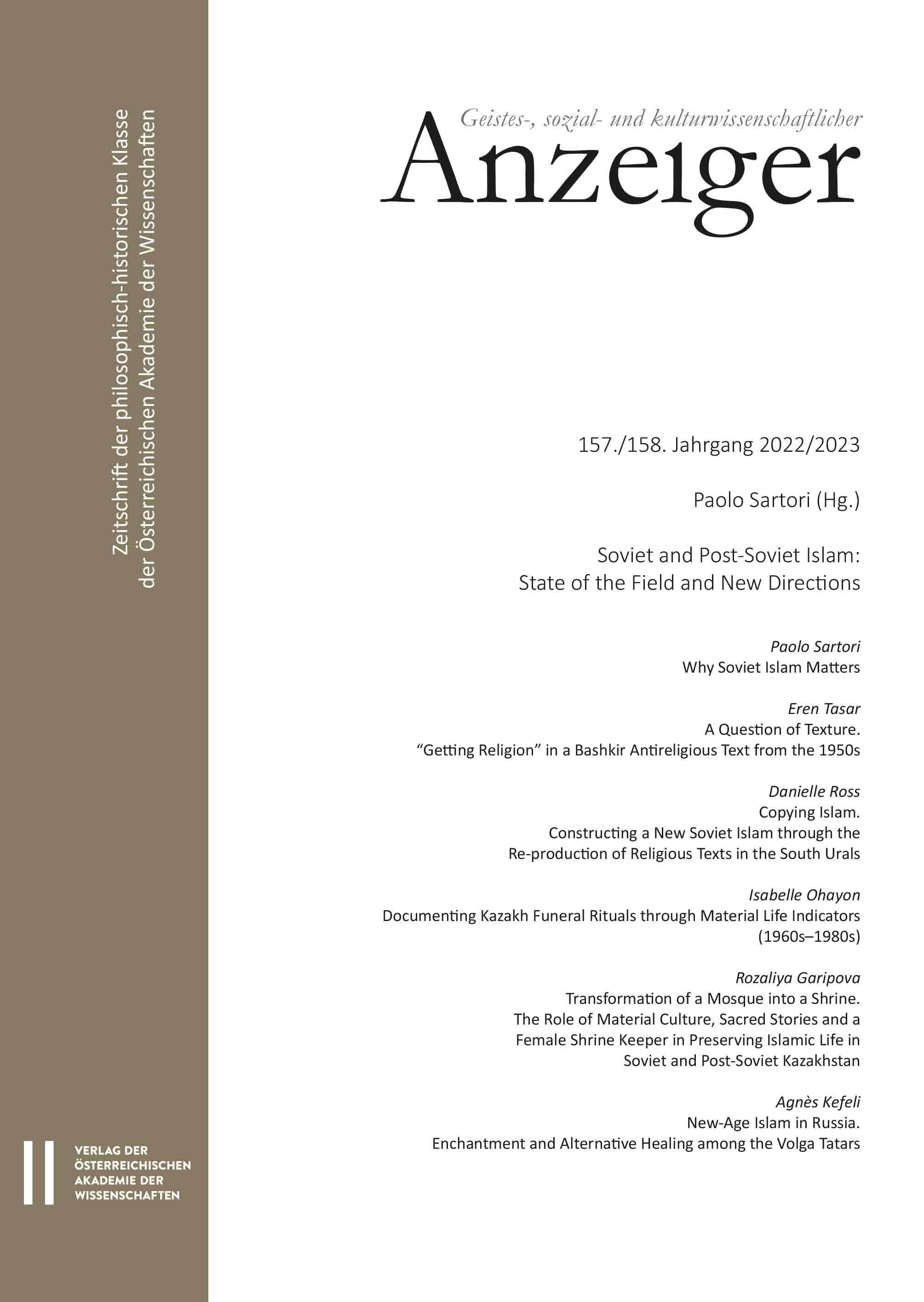
Geistes-, sozial- und kulturwissenschaftlicher Anzeiger, 157. Jahrgang 2022, Heft 1+2, pp. 51-81, 2023/09/21
157. Jahrgang 2022/2023, Heft 1+2

This article uses Soviet-era manuscripts to examine the transmission and transformation of Islamic knowledge in the Volga-Ural region from the late nineteenth century to 1991. From the 1930s to the 1980s, practicing Muslims in the Volga-Ural region preserved, read, and copied Muslim texts from the pre-Soviet period. Some of them used pre-revolutionary texts to assemble new miscellanies of Islamic knowledge. Over time, these miscellanies evolved into coherent religious guidebooks that expressed these Soviet Muslims’ understandings of what knowledge, beliefs, and acts comprised proper Islam, how one was to live in a Muslim way, and how one might gain a reputation for piety and religious expertise. This new Islam was not a remnant of a waning faith, but rather a complex, sophisticated system of beliefs, ethics, and practices comparable to twentieth-century Islamic movements.
Keywords: Islamic knowledge, Islam in the Soviet Union, Bashkir, Islamic manuscripts